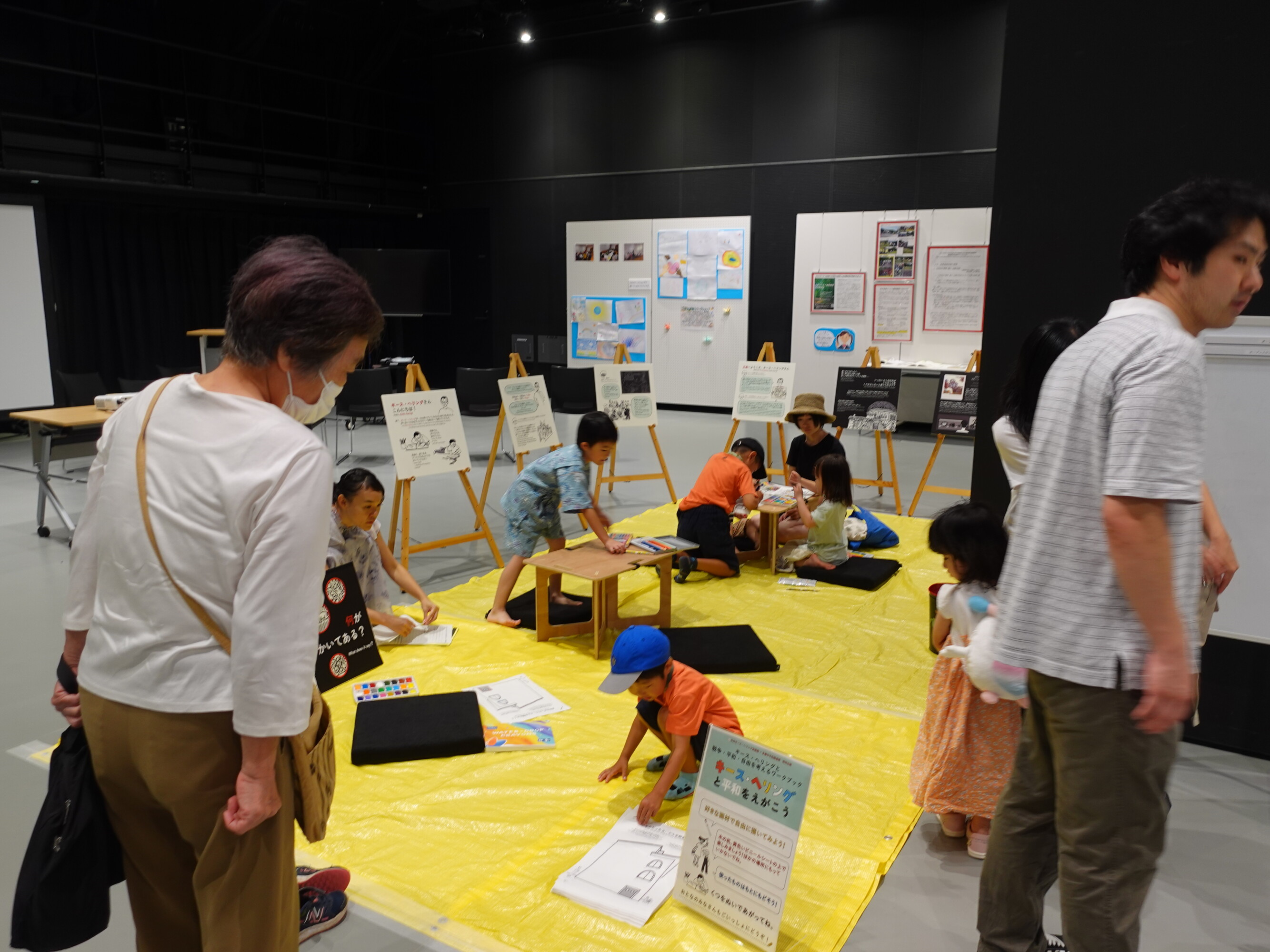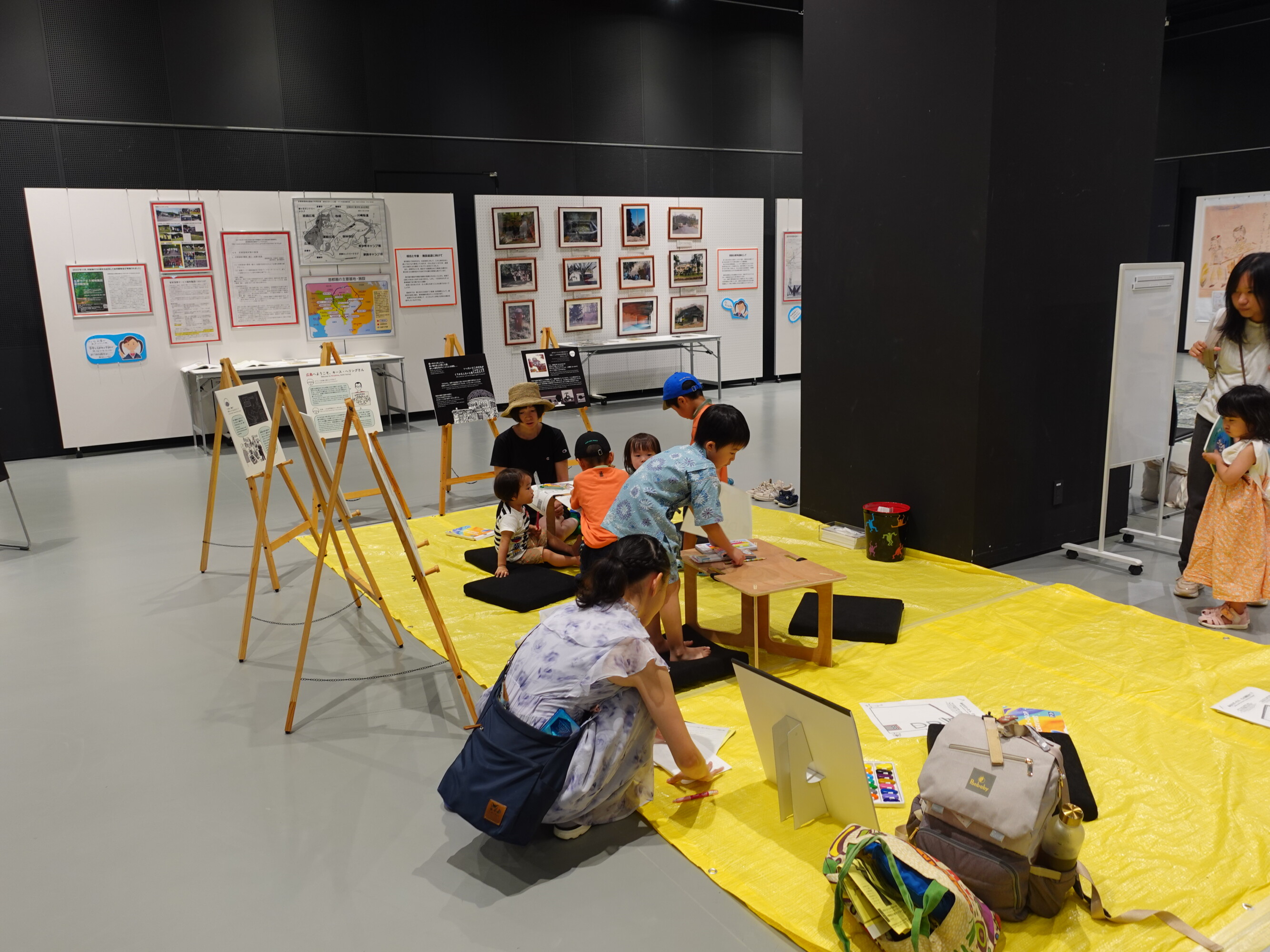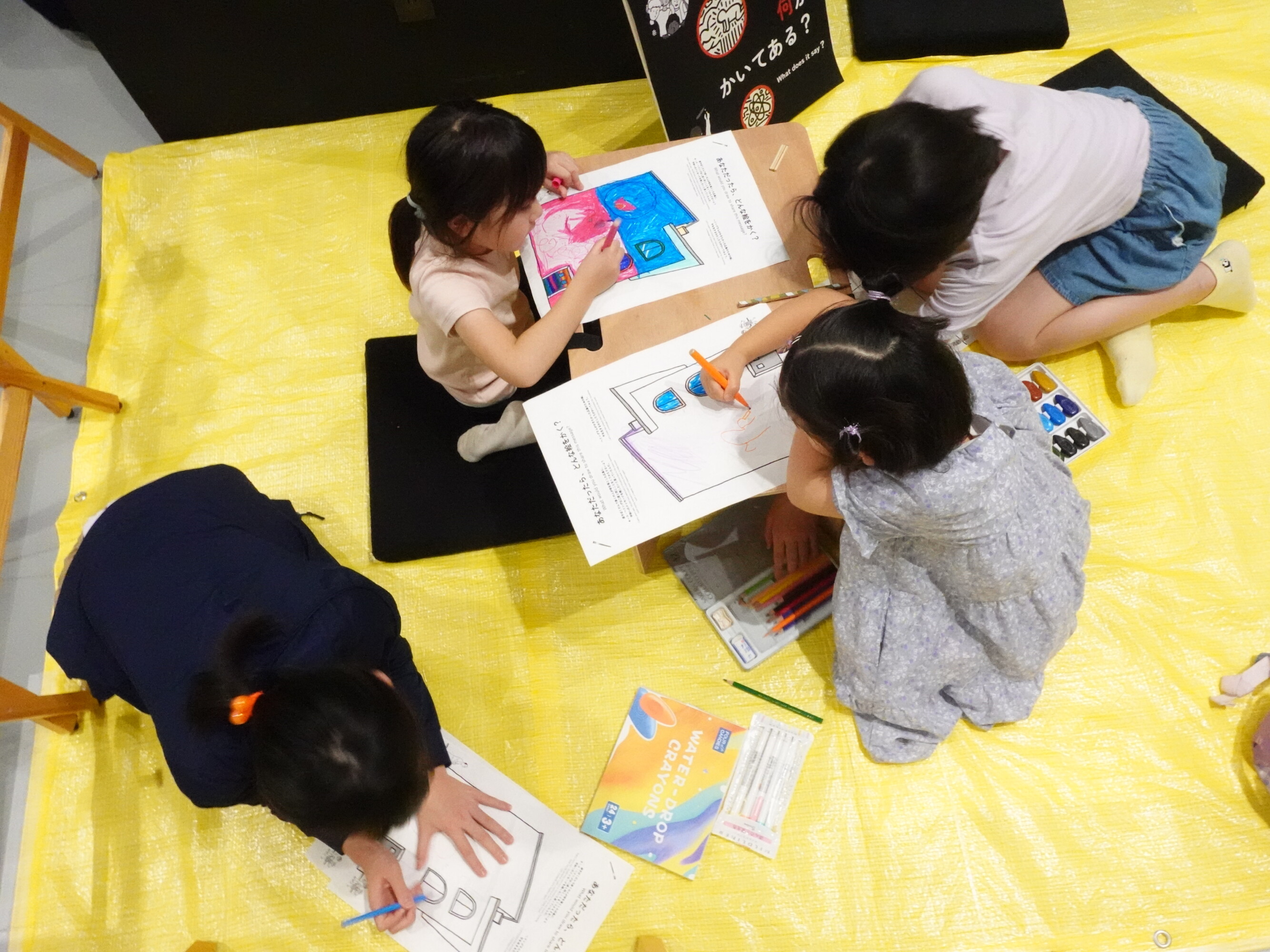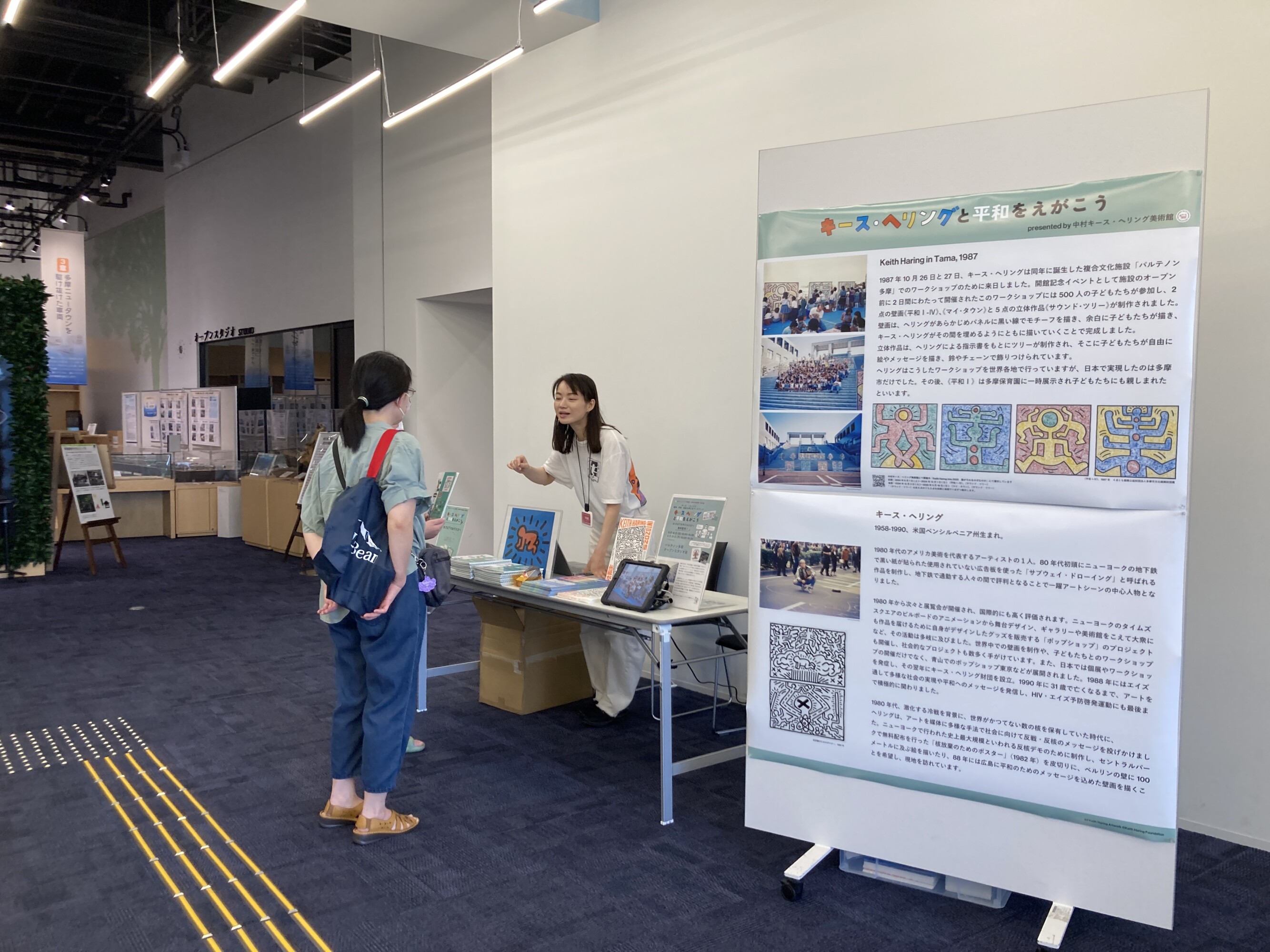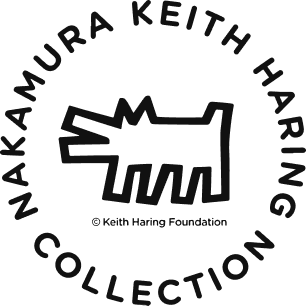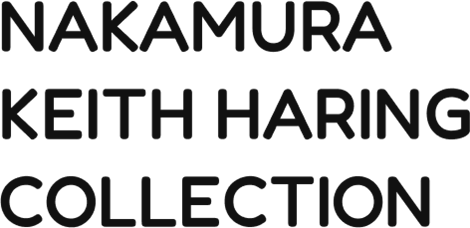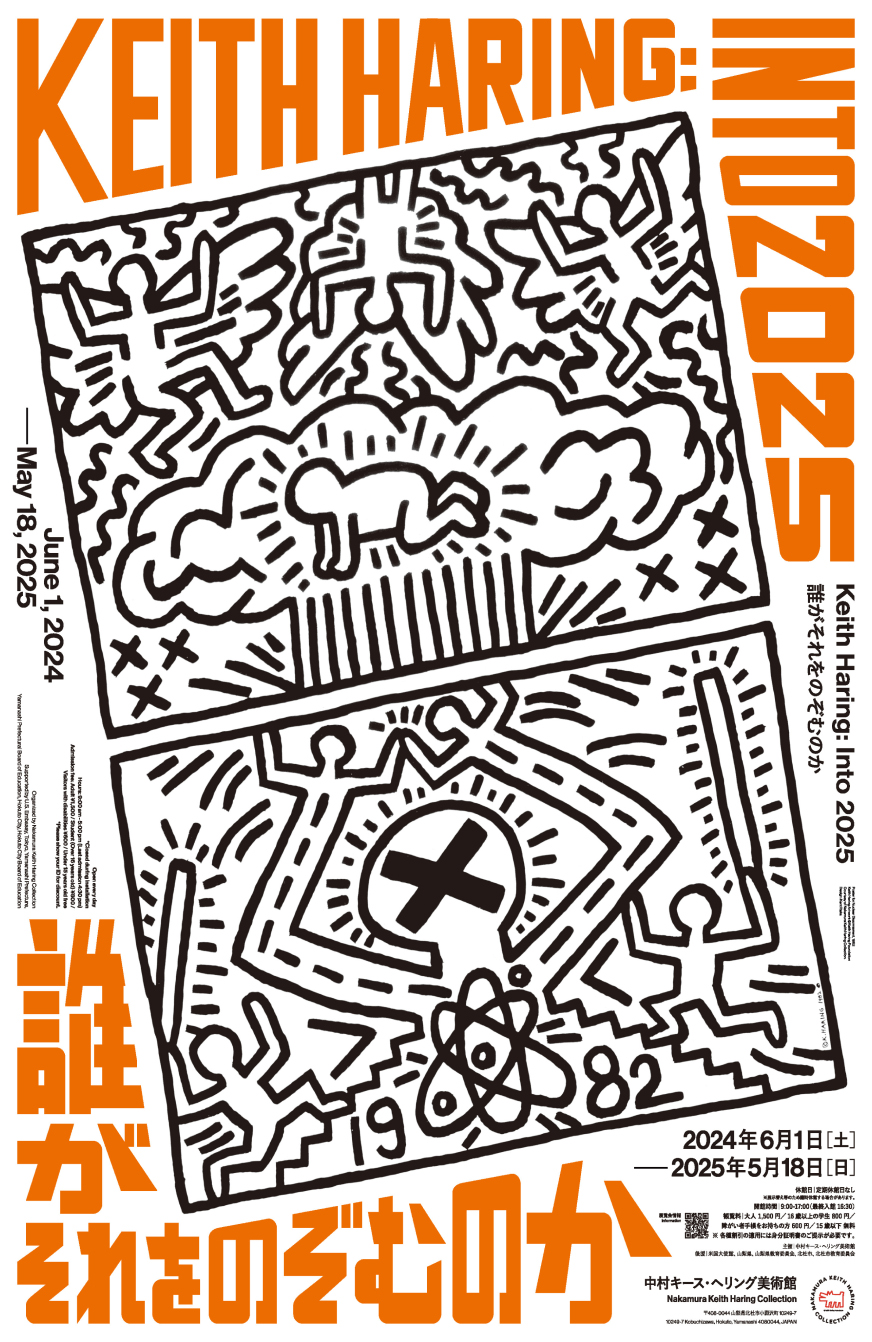
Designed by ©︎Kent Iitaka
Keith Haring: Into 2025
Organized by Nakamura Keith Haring Collection
Supported by U.S. Embassy, Tokyo, Yamanashi Prefecture, Yamanashi Prefectural Board of Education, Hokuto City, Hokuto City Board of Education
Keith Haring (1958-1990), a leading artist of American art in the 1980s, was renowned for his bright and upbeat style. Yet, beneath the surface of his engaging work lies a profound insight into societal dynamics. This exhibition aims to showcase Haring’s ability to depict society in ways that are sometimes humorous, at other times scathingly critical, prompting the audience to reflect on the direction of our collective future. Through his art, Haring continuously sent messages advocating for peace and freedom, demonstrating his commitment to engaging with and influencing the social discourse of his time.
Haring’s childhood in the 1960s coincided with the “Space Age,” a period marked by the technological rivalry between the United States and the Soviet Union. This era saw advancements in space exploration and information technology, laying the foundation for modern-day tech. The era’s bright, primary colors, showcased on newly popularized color TVs, and the televised Vietnam War profoundly influenced Haring. His interest in global events grew as he absorbed information from television and magazines, which later manifested in the frequent theme of violence in his art.
In the 1980s, when Haring’s career took off, the world was amidst a significant nuclear arms race, especially in the United States. In June 1982, in response to the escalating arms race, the largest anti-nuclear demonstration in U.S. history took place. For this event, Haring created the “Poster for Nuclear Disarmament,” distributing 20,000 copies in Central Park to advocate for disarmament. Throughout his life, Haring continued exploring various mediums and methods to deliver his messages, focusing on themes of peace and freedom.
In 1988, Haring was involved with the ‘HIROSHIMA ’88′ charity concert for the construction of an atomic bomb victims’ home. His visit to Hiroshima, the first city to suffer an atomic bombing, deeply moved him. Visiting the Hiroshima Peace Memorial Museum, he wrote in his journal: “Who could ever want this to happen again? To anyone?” This quote underlines the exhibition’s theme. Today, as we continue to witness ongoing wars and confront the presence of over 12,000 nuclear warheads around the world, we approach the 80th anniversary of the end of World War II. This backdrop serves as a stark reminder of the devastating impact of atomic bombs and underscores the ongoing struggle for peace, highlighting the pressing need to reflect on the contemporary meanings of “peace” and “freedom.”
HIGHLIGHTS
1. Anti-War and Anti-Nuclear Works
During the intensifying Cold War of the 1980s, the world saw an unprecedented stockpile of nuclear weapons. Haring used art as a medium to convey anti-war and anti-nuclear messages in diverse ways. The exhibition includes:
• Poster for Nuclear Disarmament (1982): Produced for the largest anti-nuclear demonstration in U.S. history and distributed for free in Central Park.
• Documentary photographs of the mural Haring painted on the Berlin Wall in 1986, commissioned by the Checkpoint Charlie Museum.
• The print series Apocalypse (1988): Created in collaboration with writer William S. Burroughs, pairing Haring’s depictions of a chaotic world with ten poems.
These works reveal the fears of a young artist under the threat of nuclear annihilation and his resilience in the face of despair, issuing warnings for the future.
2. Messages of Peace and Freedom
Haring’s lifelong pursuit of “peace” and “freedom” reflected the history of the United States and the global tensions of the 1980s. The exhibition presents:
• Peace I-IV, My Town, and Sound Tree: Created in 1987 with 500 children for the opening of the Parthenon Tama in Tokyo.
• CityKids Speak on Liberty: A 30-meter artwork co-created with 1,000 children to commemorate the 100th anniversary of the Statue of Liberty in 1986. This piece is showcased in approximately 1/5th scale alongside related documents.
These works, created with children, encourage reflection on the enduring significance of their messages nearly 40 years after their creation.
3. Keith Haring and Hiroshima
In 1988, Haring visited Hiroshima after designing the main visual for HIROSHIMA ’88, a charity concert supporting the construction of a nursing home for atomic bomb survivors. During his visit, he witnessed the devastation of war at the Atomic Bomb Dome and Peace Memorial Museum. Although he proposed a mural to express his hope for peace, the project never materialized. This exhibition delves into Haring’s journey to Hiroshima, shedding light on his unfulfilled plans and his enduring legacy.
INSTALLATION VIEW
Photo by ©︎Midori Kondoh
FEATURED ARTWORKS
SPECIAL EXHIBITION
Isao Hashimoto, 1945-1998
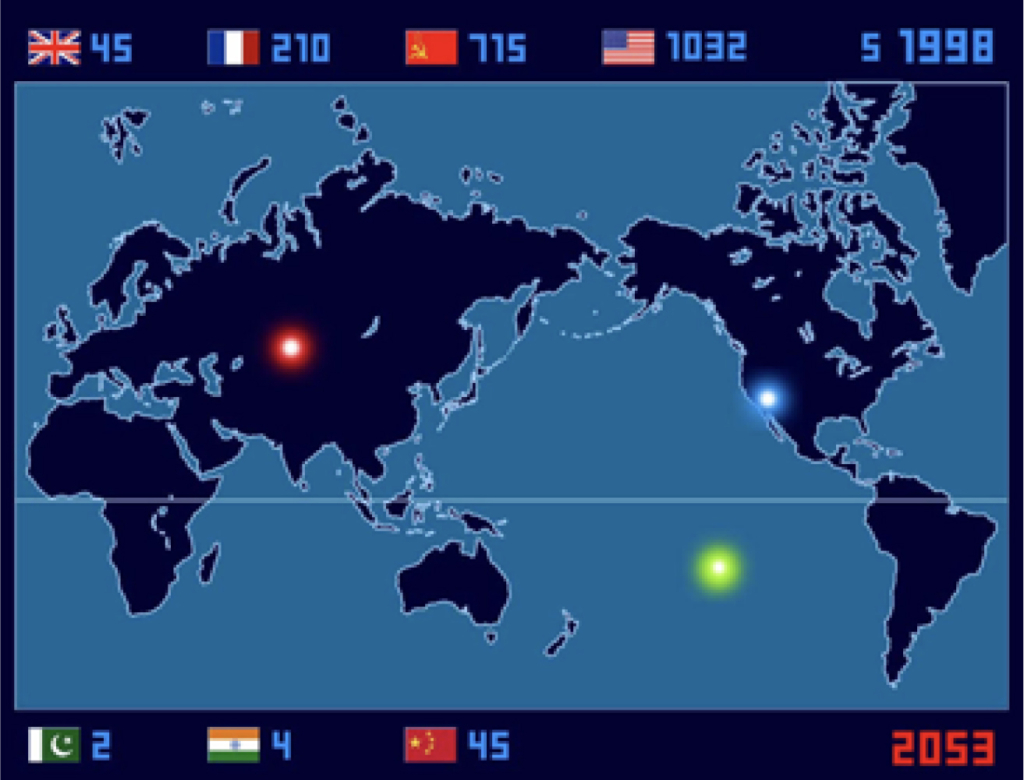
Artist Statement
“2053” – This is the number of nuclear explosions conducted in various parts of the globe.*
The first nuclear test was conducted in July 1945 in the desert of New Mexico, USA. Soon after that, the atomic bombs were consecutively dropped on Hiroshima and Nagasaki, and ever since then the tests have been repeated to a total of 2053 times until the year 1998.
Until the early 1960’s, most tests were carried out in the atmosphere causing massive radioactive contamination. In 1963, the United States, Soviet Union, and Great Britain signed the “Partial Test Ban Treaty” to resort to underground testing, but France and China continued to conduct tests on the ground.
Then, as the anti-nuclear movements gained more strength, the Non-Proliferation Treaty (NPT) was finally put into effect. It is an agreement to reduce the possibility of a nuclear war by denying the increase of the countries that possess nuclear weapons. Following this, in 1996 the “Comprehensive Nuclear Test Ban Treaty” was adopted, and by 1998 all nuclear tests accompanying nuclear explosions were banned. However, ignoring the criticism from the international community, the United States and Russia still continue to conduct sub-critical nuclear experiments that do not cause nuclear explosions.
This piece of work is a bird’s eye view of history by scaling down a month-length of time into one second. No letter is used for equal messaging to all viewers without a language barrier. The blinking light, sound, and the numbers on the world map show when, where, and how many experiments each country has conducted. I created this work for the means of an interface to the people who are yet to know of the extremely grave, but present problem of the world.
*The number excludes the tests done by North Korea in October 2006, May 2009, February 2013, January 2016, September 2016 and September 2017.
Isao Hashimoto
Born in Kumamoto prefecture, Japan in 1959. After 17 years of working in the financial industry, worked for Lalique Museum Hakone as a chief curator for 15 years. Currently, working for the Hiroshima National Peace Memorial Hall for the Atomic Bomb Victims, mainly in charge of special exhibitions and survivor testimony videos.
Artwork series expressing the fear and the folly of nuclear weapons: “1945-1998”, “Overkilled”, “The Names of the Experiments”
RELATED VIDEO
This exhibition traces Keith Haring’s footsteps in Hiroshima, as revealed through interviews with related individuals and records left in Haring’s own diary, using footage shot in present-day Hiroshima.
RELATED EVENTS
Event 1
Hiroshima Keith Haring Saw
Dates: Sunday, July 21, 2024 – Thursday, July 25, 2024
Venue: Former Bank of Japan Hiroshima Branch
Organized by: Nakamura Keith Haring Collection
Co-organized by: Children of the World Peace Monument (SEKOHEI Hiroshima Chapter)
Supported by: Keith Haring Foundation, CityKids Foundation, General Incorporated Association HAP, Ogata Shutsuryokuya
As part of this exhibition’s related events, a five-day event titled “Hiroshima Keith Haring Saw” was held at the Former Bank of Japan Hiroshima Branch. This historic building, once one of Hiroshima’s main banks, is located a mere 380 meters from the hypocenter of the atomic bomb blast on August 6, 1945. Due to its robust structure, the building survived the bombing without collapsing and was designated as an atomic bombing heritage site in 1994.
The event included a chronological exhibit featuring newly uncovered details of Haring’s visit to Hiroshima, his activities during his stay, and events following his passing. The display highlighted Haring’s connection to Hiroshima through historical documents and materials.
Additionally:
• The workbook Drawing Peace with Keith Haring was distributed for free to all children under 15 who attended the event.
• A hands-on workshop titled Light a “Torch with a Message of Peace” was open to all participants.During the workshop, attendees collaborated to recreate the torch section of CityKids Speak on Liberty, a work Haring co-created with 1,000 children in 1986 to commemorate the 100th anniversary of the Statue of Liberty. Visitors added their messages and drawings of peace to complete the piece.
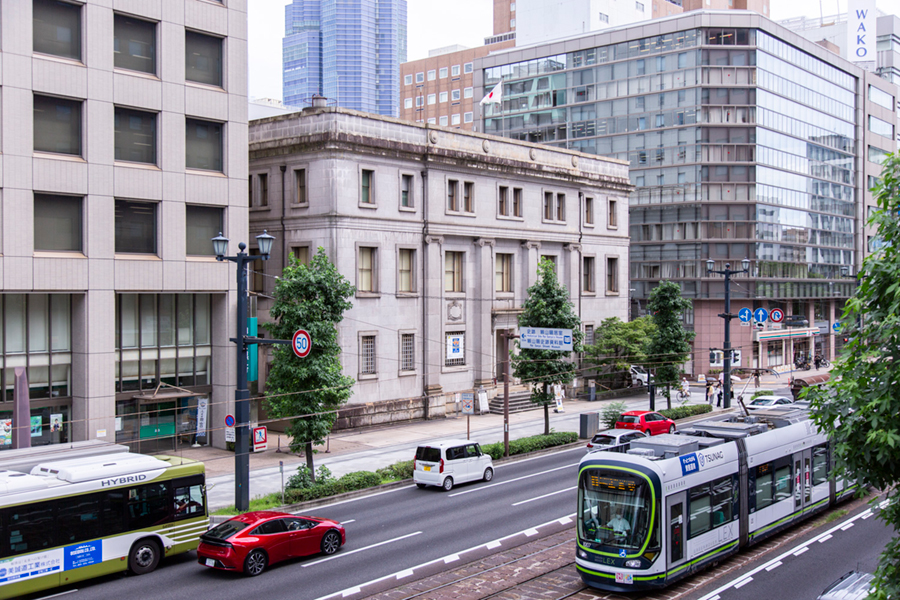
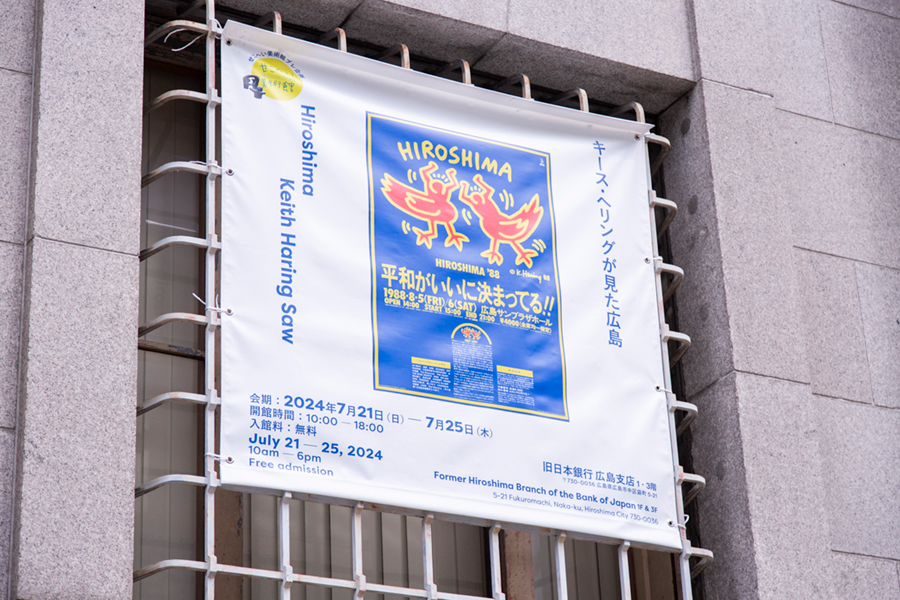
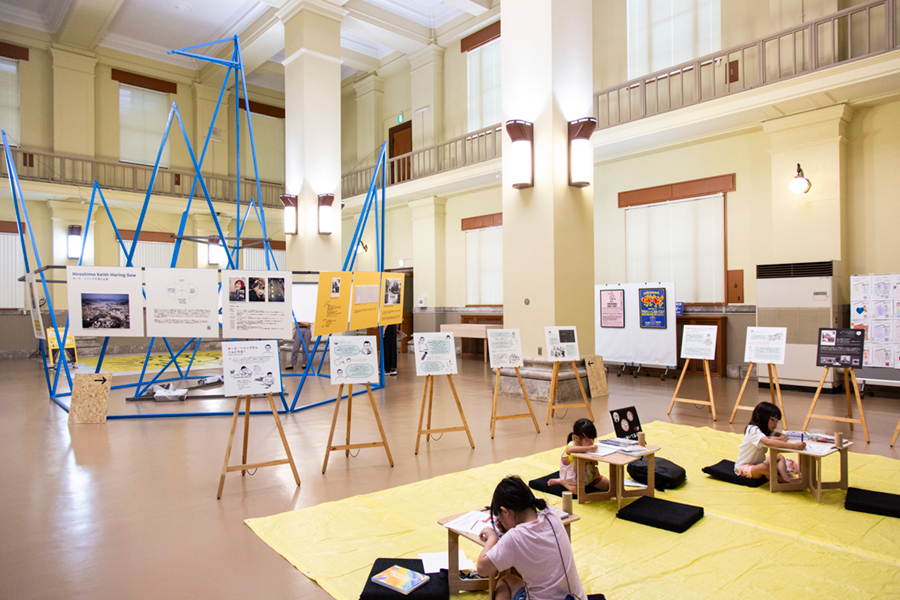
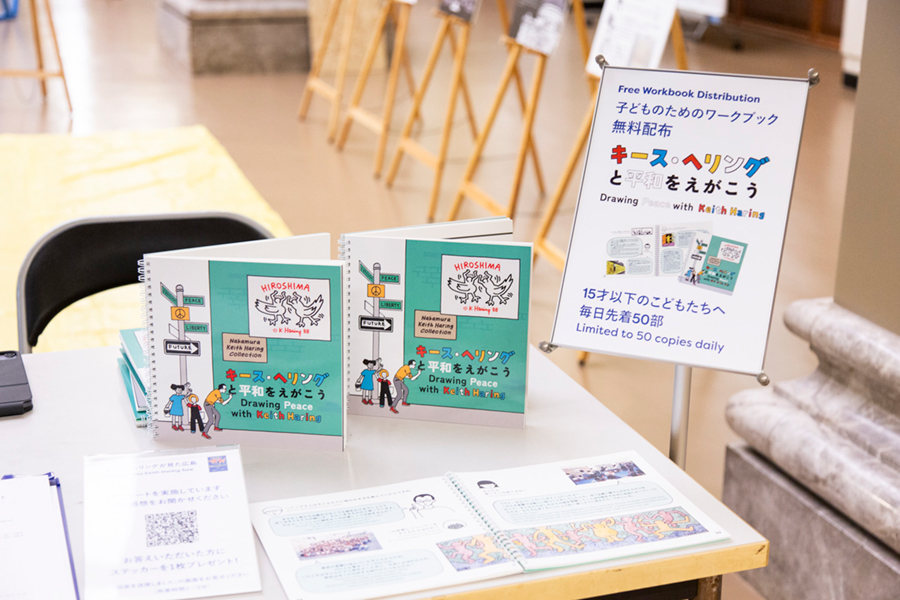
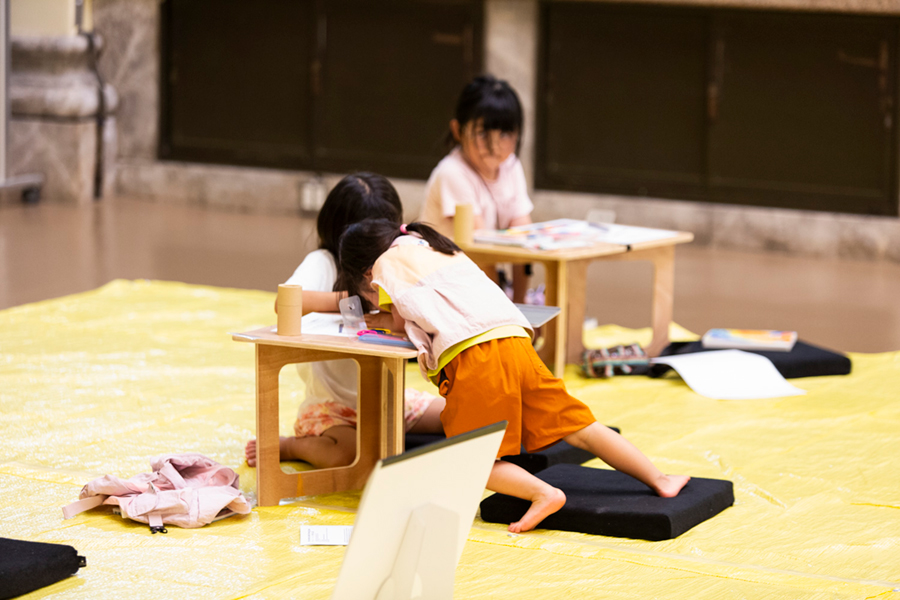
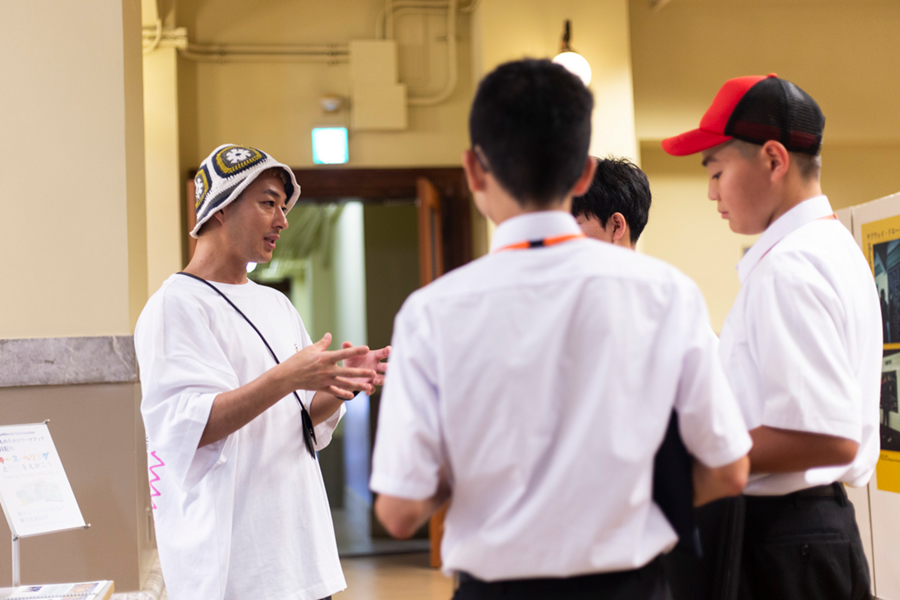
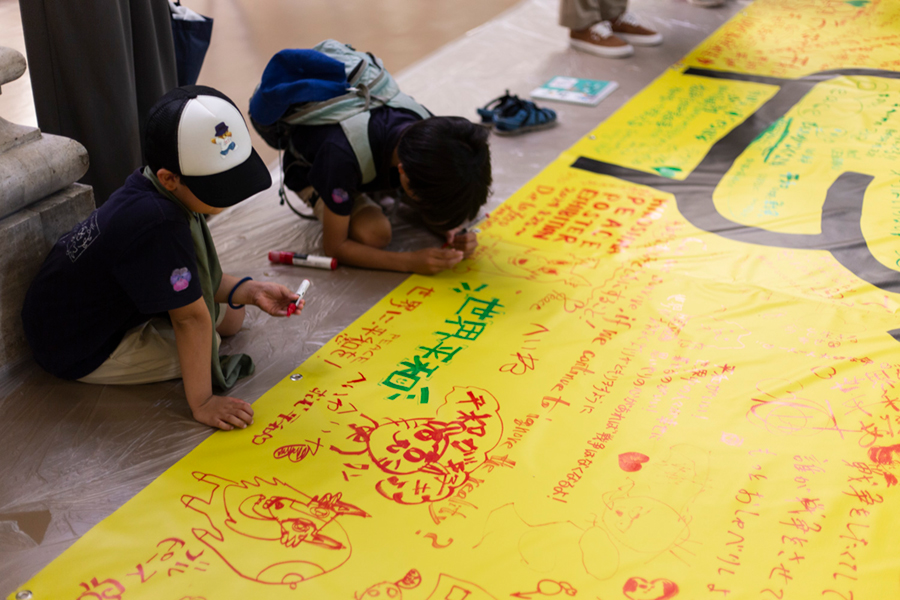
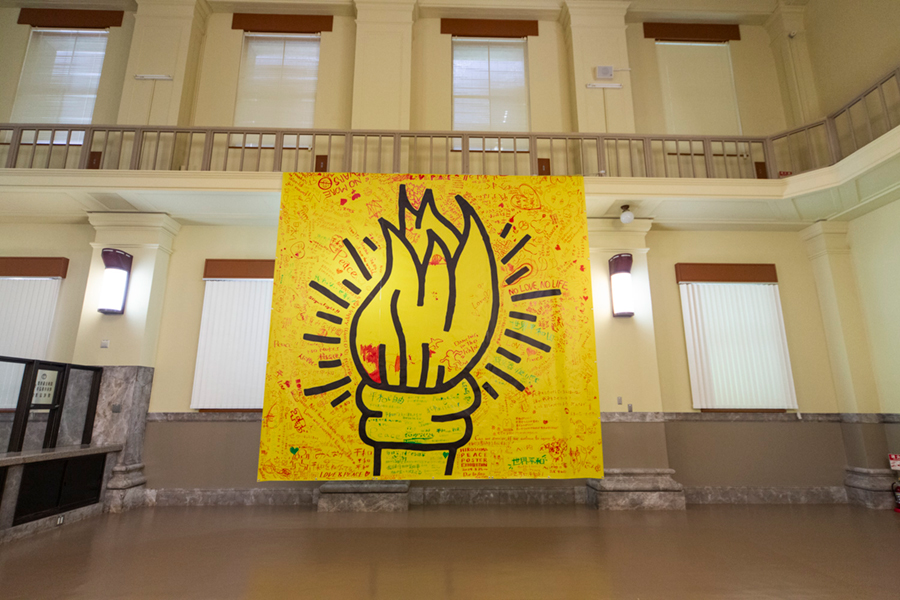
Photo by ©︎Hanna Yamamoto
Event 2
Drawing Peace with Keith Haring
Dates: Tuesday, August 6, 2024; Friday, August 9, 2024; Thursday, August 15, 2024
Venue: Nakamura Keith Haring Collection
During the event, all children aged 15 and under who visited the museum received a free copy of the workbook Drawing Peace with Keith Haring. On each event day, two gallery talks—held in the morning and afternoon—were conducted by museum curators, using the workbook as a key teaching tool.
From August 6 to August 15, an open space within the museum was equipped with freely available art supplies. Children were encouraged to explore their creativity and engage with the workbook at their own pace.
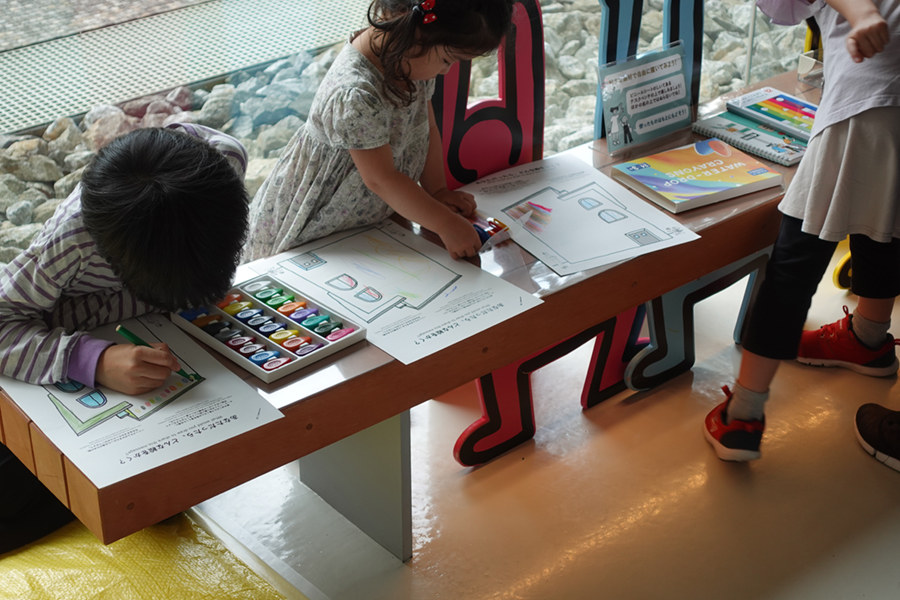



Event 3
The 33rd Tama City Peace Exhibition
Dates: Sunday, August 18, 2024 – Monday, August 19, 2024
Venue: In front of the Open Studio, Parthenon Tama
Organized by: Tama City Peace Exhibition Civic Committee, Tama City
During the two-day event at the 33rd Tama City Peace Exhibition, the workbook Drawing Peace with Keith Haring was distributed free of charge.
In October 1987, Keith Haring visited Japan to host a workshop at the newly opened cultural complex, Parthenon Tama, in Tama City, Tokyo. This workshop, held over two days as part of the opening celebrations, welcomed 500 children who collaborated to create two paintings (Peace I-IV and My Town) and five sculptural works (Sound Tree). While Haring organized workshops for children around the world, the Tama City workshop was the only one realized in Japan.
The workbook focuses on peace and freedom, inviting children to actively reflect on these themes through Haring’s works and activities. It features not only the artworks created in Tama City but also pieces Haring made for children in various parts of the world.
This event, held at Parthenon Tama, the site of Haring’s 1987 workshop, highlighted the connection between Tama City and Haring. The free distribution of the workbook over two days introduced local residents to the unique relationship between the artist and their city.
